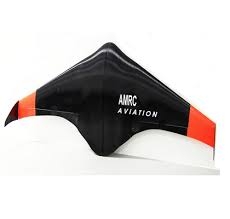Catapulting Into the Skies: 3D Printed UAV Soars With Electric Ducted fan Engines
A team of reasearchers at the Advanced Manufacturing Research Centre (AMRC) constructed the glider of ABS plastic, comprised of only nine unique parts, each of which was 3D printed using fused deposition modeling (FDM) technology on the Stratasys Fortus 900 mc machine. This production process was deemed superior to stereo lithography or selective laser sintering because FDM allows for lower material and equipment investment costs, and a more simplified production process for printing the fairly large pieces required to create a full-on UAV.
The new, powered UAV was a huge milestone for the AMRC, and the project — which included a successful test flight on the very first try — represents a major step forward for rapid manufacturing (RM) technology. Small- and medium-sized producers can use the techniques developed to even further reduce time, materials, and costs required to 3D print components used in both prototyping and final product creation.
“Understanding and playing to the strengths of RM processes is the key that allows us to continually develop exciting, tangible products. The UAV highlights how the AMRC’s Design and Prototyping Group strive to push the limits of design for RM and more importantly, coupled with demonstration of function, help to make the transition from theory to reality,” said Mark Cocking, the DPG’s Lead Additive Manufacturing Engineer.
See Also:
Fused deposition modeling (FDM) technology
Stratasys Fortus 900mc 3D Printer




